#forest of kasuga taisha shrine
Text
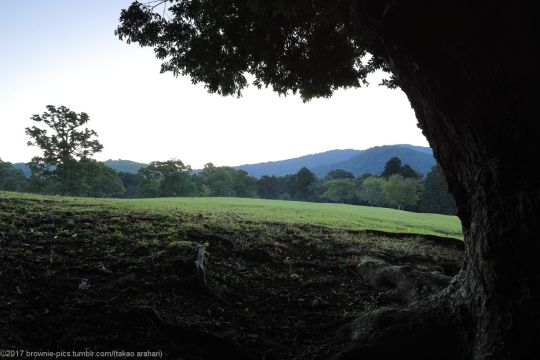


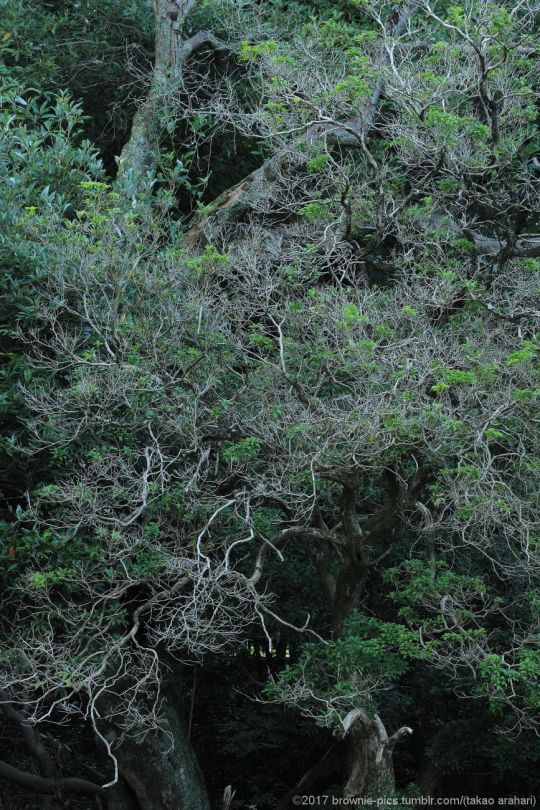

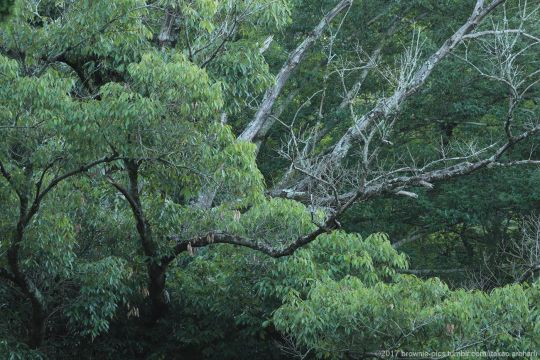

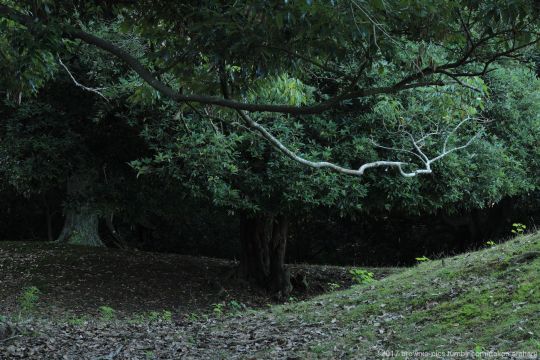

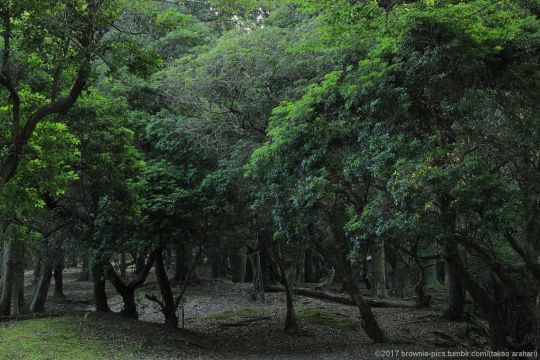


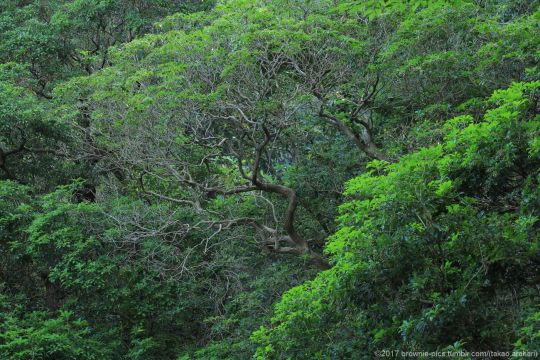


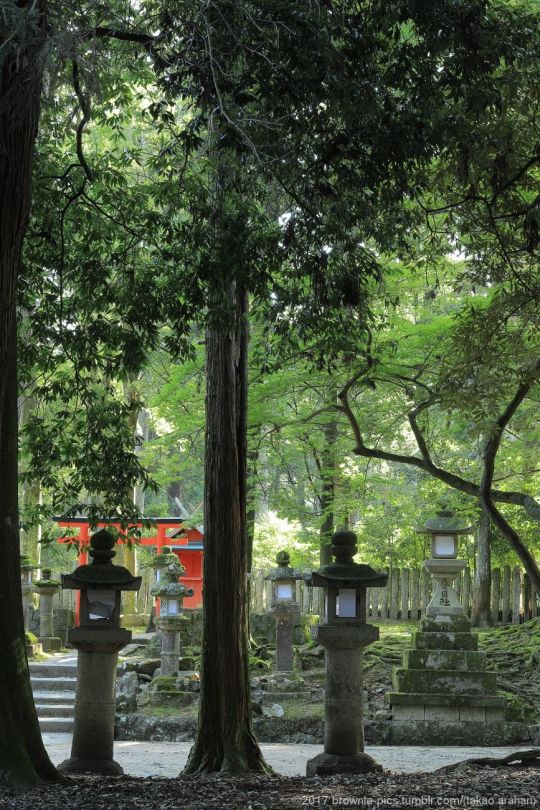
'23.7.23 飛火野~春日大社参道にて
森の中特集。この時期は多く撮影することが多い場所です。
なぜかって?・・日の当たる場所は暑いじゃないですかw
この日も陽が昇るとじわじわ気温が上がってきました。最高気温35℃の予報。ゆっくりと撮り進んで、春日さんの参道へ出ます。
#奈良#nara#日本#japan#奈良公園#nara park#飛火野#tobihino#春日大社#kasuga tasiha shrine#春日の杜#forest of kasuga taisha shrine#鹿#deer#夏#summer#photographers on tumblr#natgeoyourshot
173 notes
·
View notes
Text
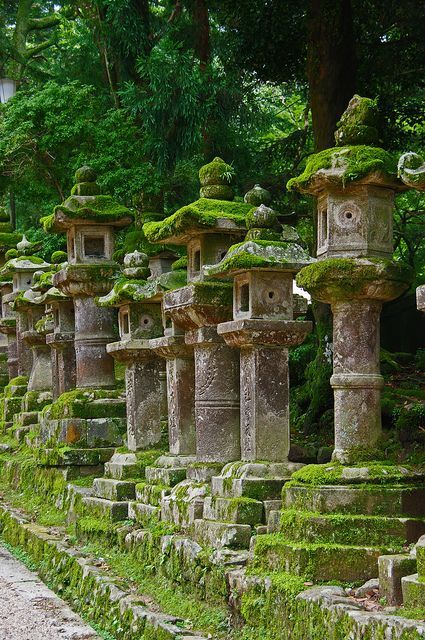
Kasuga Taisha Shrine, Nara, Japan Kasuga Grand Shrine (春日大社 Kasuga-taisha?) is a Shinto shrine in the city of Nara, in Nara Prefecture, Japan.[1] Established in 768 AD and rebuilt several times over the centuries, it is the shrine of the Fujiwara family. The interior is famous for its many bronze lanterns, as well as the many stone lanterns that lead up the shrine. The architectural style Kasuga-zukuri takes its name from Kasuga Shrine's honden (sanctuary). Kasuga Shrine, and the Kasugayama Primeval Forest near it, are registered as a UNESCO World Heritage Site as part of the "Historic Monuments of Ancient Nara". The path to Kasuga Shrine passes through Deer Park. In Deer Park, deer are able to roam freely and are believed to be scared messengers of the Shinto gods that inhabit the shrine and surrounding mountainous terrain. Kasuga Shrine and the deer have been featured in several paintings and works of art of the Nambokucho Period.[2] Over a thousand stone lanterns line the way. The Man'yo Botanical Garden, Nara is adjacent to the shrine. (Wikipedia EN: en.wikipedia.org/wiki/Kasuga-taisha )
16 notes
·
View notes
Text
updates,
I got back home from Japan on March 16!! It's been such a busy time since then. I left again on the afternoon of March 18 to attend a work event in St. Louis, Missouri, and I just got back home again yesterday evening.
I was surprised to really enjoy St. Louis. I didn't know anything about the city before, but it's a beautiful place. There are so many flowering trees all over, and lots of green space with Forest Park. The Arch and the Wash U campus are impressive.
The work component of the trip was exhausting. I worked 7 AM - 7 PM every day, and it was very social. Between colleagues and other members of the public, I was literally talking to people for almost the entire time every day. Caffeine kept me going. Still, it was a positive experience. I got to meet my organization's staff in St. Louis, and they're really nice people. I also met dozens of other people who were very interested in the work we do.
But it's so good to be home. I've been gone pretty much constantly from March 7 until today. I missed the comforts of home, and Derek, and Westin.
Highlights of my last few days in Japan,
Visiting the massive Todai-ji Temple in Nara and the surrounding temple spaces. My visit in the morning lined up with several dozen students taking a trip there, and it was cute to see them so excited and enjoying the experience as well, ringing the bells at the temples and lighting candles and incense offerings. I lit an incense stick in front of the Great Buddha with them. :)
Matcha latte at a cafe overlooking Nara Park, as the deer harassed people for food.
The deer!! They were so cute! I saw baby deer too.
Walking up to Kasuga Taisha Shrine and exploring the surrounding areas, finding the deer on the way.
Walking in the old Nara neighborhood of Naramachi, where I bought the best strawberry daifuku I have ever had, and ate it while sitting on the banks of a lake.
I felt so very sad about my last evening in Gion, so I made it a special one with dinner at Gion Duck Noodles, dango, and the most delicious hot taiyaki filled with fresh chestnut cream.
The last thing I did in Kyoto was a shibori silk scarf dying class at the Kyoto Shibori Museum. It was a 1:1 workshop and the instructors at the museum were so kind and hospitable. I'm thrilled with the scarf I made!
My last afternoon in Tokyo was a chill one. I got a foot massage, went out for dinner, and visited my beloved sento public baths one last time. The peak relaxation of those baths ended up being one of my favorite Japan experiences. ❤️
I did some shopping on Saturday before heading to the airport, and it was a smooth 11-hour direct flight home. I'm glad to be home with my family and friends, but I miss Japan. The food, the ease of public transport, the public baths... My heart was happy there. The vibes were good. I felt sadder upon leaving Kyoto than I ever have for any other trips.
I've wanted to go to Japan since I was 12. I'm so happy I finally got to experience that dream come true, and I still hope I can go again someday and explore more of the country. ❤️
18 notes
·
View notes
Text
My Trip to Japan! ⛩️ Part 4
19.12.
We woke up early, had the funny breakfast, and took the suburban train to Nara. The impression we got from it is that it's a "normal" city. There are no major shopping miles like in Tokyo or Kyoto, just regular streets, even the pedestrian market-street. There are no shopping malls or big stores in the city center, only on the outskirts. We left our luggage at the hotel and went straight to Kasuga Taisha. It’s a beautiful Shinto shrine boasting more than 3000 votive fretworked bronze lamps, each of them different designs, hanging along the galleries of the main temple. These are only lit three times a year, but the shrine has a dark room with a few lamps lit for visitors to enjoy its magical appearance. In a corner of the garden, there’s a cedar tree about 1000 years old, depicted in a 14th-century scroll. A juniper tree grows diagonally from the roots of the cedar, for which part of the roof of the adjacent pavilion was cut to avoid hindering its development. In the same garden, in front of the goshuin office, there’s a gazebo with a 700-year-old wisteria.
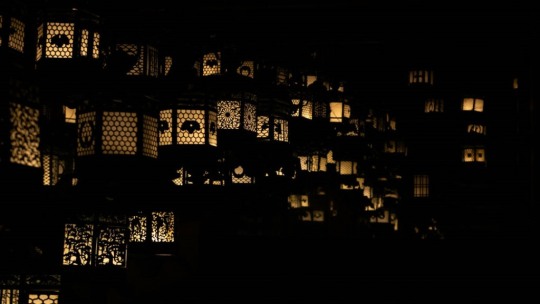

The shrine is at the foot of another sacred mountain, Mount Kasuga or Mikasa (Yes! Mikasa!), a place just as moving as Fushimi Inari. Several pavilions and shrines rise around the main hall, always at the foot of the mountain, which simple mortals cannot access because it’s the dwelling place of the gods. One of these subsidiary shrines is the Meoto Daikokusha, dedicated to two deities, husband and wife, so people come to pray for a happy marriage. The complex started to grow in the 8th century, when the emperor certified the sacred nature of the mountain and prohibited hunting and logging, which preserved the native forest in its primeval state to this day. Moreover, deer are considered messengers of the gods enshrined in the main hall, so this contributed to the unique fact that deer roam freely throughout the park.

Nara Park is a bit like Hampstead Heath: it extends over many hectares, crossed by several roads, and houses various temples and buildings. The difference is the deer, which are really everywhere (we even saw a stray one near our hotel!). I feared they would be vicious; I’ve read some alarming accounts, and the warning signs didn't help, but fortunately, they were pretty civil (for a wild animal ofc). Obviously, they’re on the hunt for crackers and always on the lookout for anyone who can give them a snack, but people respect the rule to feed them only the special deer crackers sold in shops and stands all around the park. The deer, meanwhile, aren’t stupid at all: although they flock around you the second they see you holding crackers, they leave the vendors alone, even if they have piles of crackers in plain sight. The deer also give up bothering you quickly once they see you’ve run out of "shikasenbei" (I’ve no proof and no doubts they’re formulated to have a very faint smell that doesn’t cling to hands).
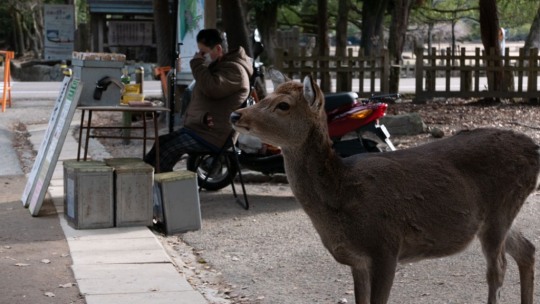
After visiting the shrine, we went up a bit a street that was supposed to have a lot of restaurants, but most of them were closed, we assume, due to being low season. The only place open was a souvenir shop with a diner area at the back. It was a typical roadside dingy diner, with a concrete floor; authentic 1970s furniture complete with Formica and fake leather; a mishmash of wonderfully kitschy decorations including, but not limited to, discoloured posters, deer antlers, various trinkets in their cellophane bags, statuettes of very questionable taste, cabinets that have never seen a duster, a sarong hung like a tapestry, a kerosene heater like my grandma's had, old furniture and stuff piled up in a corner, and a painting of a tiger so ghastly it gave Husband mild PTSD. In this unique place, we enjoyed one of the best meals, if not the best, of the whole trip: homemade katsudon and oyakodon, very tasty, with the ever-present miso soup on the side, and the Ojiisan making random comments ("Spain? Oh yeah, I visited Madrid long ago. Pesetas, they had." "Argentina, football"). And all for the price of a McDonald's menu in Europe. In the back, you could see a huge dining room, so during high season, the crowds must be significant.
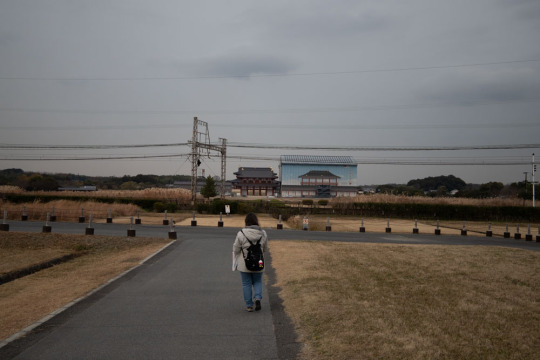
After eating, we went to Kofuku-ji, which was a bit of a downer as the main hall wasn’t worth the ¥500 entrance fee (unless you're a huge Buddha fan ig). We could have just seen it from the outside and walk around the minor halls, which are free. We then took a bus to the outskirts, to the ruins of the Nara Imperial Palace. It’s a gigantic site (about 145 hectares) where, for the past 25 years, they have been slowly rebuilding the dependencies of the ancient palace, one pavilion at a time. It's an impressive job of archaeology, engineering, restoration, and craftsmanship, and it’s entirely for free though we wouldn't have minded paying an entrance fee here. Currently, there are three pavilions rebuilt, and they’re building the fourth under a roofed scaffolding with a platform for people to peek into the building site. 21st-century engineering and safety standards meet 8th-century construction techniques to achieve a reproduction as close to the original as possible. We also saw the reconstruction of the service dependencies and the museum space they have around the archaeological excavations. We didn't cover everything; it would have been a titanic undertaking, and the cold and wind were starting to take a toll on us. So we returned to the city and went to see the shops, staying mainly on the covered pedestrian street because of the drizzle. It turns out, everything closes at seven in Nara (except for large drugstores, gachapon, and the like), so we got into a ramen place for dinner. It seemed like the safest bet, but it wasn't. What a let down! The broth was so bland not even soy sauce made a difference. It was the most disappointing meal of the trip. How can you open a soup joint and not have a decent broth?

20.12
We started the day at Todai-ji. The entrance fee was high compared to what we'd been paying elsewhere. I get the feeling that the people of Nara might still be a bit salty about losing their status as capital city of Japan, which they held for only 75 years in the seventh century. Nara is only an hour away by suburban train from Kyoto and Osaka; it’s not on the Shinkansen line. I think this must result in most visitors coming just for the day. There probably aren't many like us, spending two days there while exploring all the heritage sites, and that's why the city lacks the touristic infrastructure of its neighbours.

The main hall of Todai-ji, the Daibutsu-den, houses a 15-meter bronze statue of the Buddha Vairocana. It was destroyed twice. The third and current building, built in the 18th century, is 30% smaller than the previous one, and yet still manages to be the world's largest wooden structure. Behind the Buddha, one of the columns has a 50 cm wide hole at its base—the size of the Buddha's nostril. It is said whoever manages to pass through the hole will attain enlightenment. After visiting the temple and the museum, we spent some time strolling through the park and feeding shikasenbei to the deer. We had a delicious lunch at a yakitori place, Shikamaru, which played the whole Beatles discography on full random.
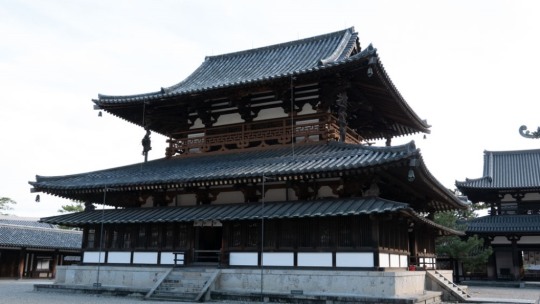
In the afternoon we went to Horyu-ji, outside Nara. This Buddhist temple is made up of the oldest wooden buildings still standing: from the 8th century to our days. Again, though the entrance ticket price was normal to cheap for European standards, it was expensive compared to other temples. Still, the temple’s very nice, and even being a novice in Japanese architectural heritage you can tell the style’s a bit different from newer ones. We also were treated to a glimpse of Japan way off the beaten track: Horyu-ji is in a semi-rural village, complete with a handful of run-down shops around the train station, many of them closed; supermarkets and warehouse-type businesses along the main road, or shops scattered without a defined shopping mile. Low houses, vegetable patches, kids on bikes, very few people on the streets. I’ve seen a lot of little towns like this. I like it how some places are the same everywhere you go, no matter how different we make them out to be.

We spent the rest of the afternoon window-shopping - On the plus side, there was this gacha at the local Animate! ⬆️
3 notes
·
View notes
Text
Explore 8 Top Destinations In Japan Tour Packages From India
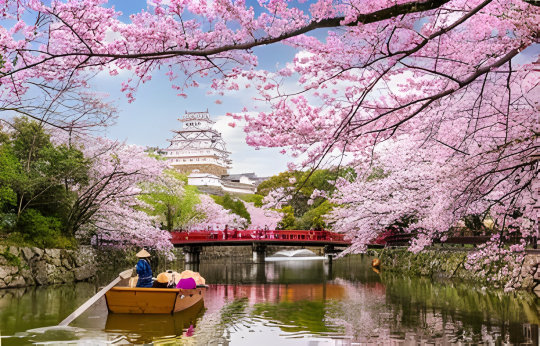
Japan, with its blend of ancient traditions and modern marvels, has long captured the imagination of travelers worldwide. For those embarking on a journey from India to Japan, tour packages offer a convenient and immersive way to explore this fascinating country. In this guide, we'll unveil eight must-visit destinations that are often included in Japan tour packages from India, promising unforgettable experiences for every traveler.
1. Tokyo: The Bustling Metropolis
Tokyo, Japan's dynamic capital, is a city where traditional culture intersects with futuristic innovation. Included in many Japan tour packages from India, Tokyo offers a kaleidoscope of experiences, from bustling street markets and serene Shinto shrines to neon-lit skyscrapers and world-class museums. Wander through the historic districts of Asakusa and Shibuya, marvel at the iconic Tokyo Tower, and indulge in mouthwatering Japanese cuisine at local izakayas.
2. Kyoto: Timeless Elegance
Kyoto, with its well-preserved temples, traditional tea houses, and serene gardens, transports visitors to Japan's ancient past. Featured prominently in Japan tour packages from India, Kyoto is a treasure trove of cultural riches, including UNESCO World Heritage sites like Kinkaku-ji (Golden Pavilion) and Kiyomizu-dera Temple. Immerse yourself in the art of the tea ceremony, stroll through bamboo forests in Arashiyama, and witness the breathtaking beauty of cherry blossoms in spring.
3. Osaka: Culinary Delights
Osaka, known as Japan's culinary capital, is a paradise for food lovers seeking authentic Japanese cuisine. Included in Japan tour packages from India, Osaka offers a gastronomic adventure like no other, with its bustling food markets, vibrant street food stalls, and world-renowned restaurants. Indulge in savory okonomiyaki (Japanese pancakes), fresh sushi and sashimi, and melt-in-your-mouth takoyaki (octopus balls), experiencing the diverse flavors of Japan.
4. Hiroshima: Historical Significance
Hiroshima, forever marked by the events of World War II, is a city of resilience and peace. Featured in Japan tour packages from India, Hiroshima's Peace Memorial Park and Atomic Bomb Dome serve as poignant reminders of the devastating impact of nuclear warfare. Pay homage to the victims at the Hiroshima Peace Memorial Museum, then journey to the nearby island of Miyajima to marvel at the iconic floating torii gate of Itsukushima Shrine.
5. Nara: Cultural Heritage
Nara, Japan's first permanent capital, is a living testament to the country's rich cultural heritage. Included in Japan tour packages from India, Nara is home to some of Japan's oldest and most significant temples, including Todai-ji Temple and Kasuga Taisha Shrine. Encounter friendly deer roaming freely in Nara Park, explore the tranquil beauty of Isuien and Yoshiki-en Gardens, and admire the intricate craftsmanship of Nara's traditional wooden architecture.
6. Hakone: Natural Beauty
Hakone, nestled in the foothills of Mount Fuji, is a picturesque retreat known for its hot springs, lush forests, and panoramic views. Featured in Japan tour packages from India, Hakone offers a serene escape from the hustle and bustle of city life. Relax in rejuvenating onsen baths, cruise across Lake Ashi aboard a traditional pirate ship, and soak up the breathtaking vistas of Japan's iconic mountain, Mount Fuji.
7. Sapporo: Winter Wonderland
Sapporo, located on the northern island of Hokkaido, transforms into a winter wonderland during the snowy months. Included in Japan tour packages from India, Sapporo hosts the famous Sapporo Snow Festival, where intricately carved ice sculptures and illuminated snow statues dazzle visitors from around the world. Sample piping hot bowls of miso ramen, glide down snow-covered slopes at nearby ski resorts, and experience the magic of Hokkaido's winter landscapes.
8. Nikko: Scenic Splendor
Nikko, nestled amidst lush mountains and dense forests, is a UNESCO World Heritage site renowned for its natural beauty and cultural significance. Featured prominently in Japan tour packages from India, Nikko is home to Toshogu Shrine, a lavishly decorated mausoleum dedicated to the Tokugawa shogun. Marvel at the intricate carvings and vibrant colors of the shrine, hike through pristine wilderness trails, and soak in the tranquil atmosphere of this sacred mountain retreat.
Conclusion
Japan tour packages from India offer travelers a gateway to a land of ancient traditions, modern innovation, and natural splendor. From the bustling streets of Tokyo to the serene temples of Kyoto and the snowy landscapes of Hokkaido, Japan promises unforgettable experiences at every turn. Whether you're seeking cultural immersion, culinary delights, or scenic beauty, Japan's diverse attractions cater to every traveler's interests, making it the perfect destination for your next adventure.
0 notes
Text
Visiting Kasuga Shrine: Primeval Forests and Fujiwara Power
On our recent trip to Kyoto and Nara, we spent our last morning in Nara visiting the venerable Shinto shrine called Kasuga Taisha (春日大社), or Kasuga Grand Shrine (English / Japanese).
The English site doesn’t really explain the history or significance of the shrine though. Kasuga, along with neighboring the Buddhist temple of Kofukuji, were centers of power for the elite Fujiwara clan. Both the…

View On WordPress
0 notes
Text
Osaka and Kyoto are two of Japan's most popular cities, and there is plenty to see and do during a 5-day trip. Here are some suggestions for a 5-day travel plan in Osaka and Kyoto:
Day 1:
Arrive in Osaka and check into your hotel. Spend the afternoon exploring the city's main attractions, such as the Osaka Castle, the Universal Studios Japan theme park, and the Osaka Aquarium.
In the evening, head to the Dotonbori area for dinner at one of the many restaurants and street food stalls. The area is known for its lively atmosphere and delicious local specialties, such as takoyaki (octopus balls) and okonomiyaki (savory pancake).
Day 2:
Take a day trip to the nearby city of Nara, which is known for its beautiful parks and temples, as well as its friendly deer population. You can visit the Todai-ji Temple, home to the world's largest bronze Buddha, and the Kasuga-taisha Shrine, with its thousands of stone lanterns.
In the evening, return to Osaka and enjoy dinner at one of the city's many izakaya (Japanese pubs) or sushi restaurants.
Day 3:
Take the train to Kyoto, which is located about an hour away from Osaka. Upon arrival, check into your hotel and spend the afternoon exploring the city's main attractions, such as the Kinkaku-ji Temple, the Gion District, and the Fushimi Inari Shrine.
In the evening, head to the Pontocho Alley for dinner at one of the many traditional restaurants and bars.
Day 4:
Spend the day exploring the many temples and shrines of Kyoto, such as the Kiyomizu-dera Temple, the Ginkaku-ji Temple, and the Arashiyama Bamboo Forest. You can also visit the Kyoto National Museum or the Kyoto Art and Crafts Museum to learn more about the city's history and culture.
In the evening, enjoy dinner at one of Kyoto's many local restaurants or izakaya.
Day 5:
Take a day trip to the nearby town of Arashiyama, located on the outskirts of Kyoto. The town is known for its beautiful natural scenery, with its mountains, forests, and rivers. You can visit the Tenryu-ji Temple, the Okochi-Sanso Villa, and the Iwatayama Monkey Park, which is home to a group of friendly macaques.
In the evening, return to Kyoto and enjoy your last night in the city with a farewell dinner at a local restaurant.
I hope these suggestions help you plan your 5-day trip to Osaka and Kyoto. Have a great time exploring these two amazing cities!

0 notes
Video
Night at Kasuga Shrine por ScottSimPhotography
Por Flickr:
Nara Rurie festival at Kasuga Grand Shrine. ◦ なら瑠璃絵 ● Sony a6000 ● E PZ 16-50mm
#japan#japanese#asia#asian#kansai#nara#kyoto#shrine#kasuga#grand#taisha#forest#enchanted#wood#illuminations#illuminated#magical#mysterious#famous#visit#travel#UNESCO#rurie#なら瑠璃絵#奈良#奈良公園#春日大社#春日#春日山原始林#kit lens
17 notes
·
View notes
Text
Best places in Japan that is worth to visit
Japan has places that are worth to visit specially, when you only have a limited time to be there. Not only the places that makes it worth it, the kindness of Japanese people, the cleanliness, the food, and also the culture. Japanese treat everyone with kindness, I’ve read about a tourist that talk’s abut a taxi driver in Japan with a white gloves offer him an umbrella as he arrived in his hotel because it is raining and he do not have one. See? The cleanliness and kindness will really greet you as you arrive there. Japanese food is loved worldwide for example sushi. And now, let us talk about the places that will make your visit in Japan worth it.
Tokyo
The city that represents the colors of Japan is Tokyo. There are endless places to visit in Japan, and exploring everything on a single trip would always be impossible. But, thanks to its anime culture and world class attractions, the famous city of Tokyo still deserves the top spot in your itinerary. And if you are not really pleased by the historical places, the city has a great culinary scene as well! This is definitely among the best places in Japan to visit.
You can spend your night near the Tokyo Tower or you could go shopping in Odaiba. The places in Tokyo that considered as top attractions are Tokyo Disneyland, Tokyo Skytree, they also have Tokyo Disney Sea. Interesting right? And if you want to eat Japanese foods there are many restaurants in Tokyo that serves the best Japanese foods just like in Tapas Molecular Bar, Ise Sueyoshi, Sometarō.
Kyoto
A city of sanctuaries, gardens & palaces! The sacred city of Kyoto is one of the best places to visit in Japan in the spring of all the major destinations in Japan, regardless of whether you're holidaying with your family or your partner. Iconic temples, shrines, palaces, parks, and bamboo forests are a treat for your eyes, and on your first outing, you can't afford to miss them. In Kyoto you can visit Kyoto Imperial Palace, Philosopher’s Walk, Fushimi-Inari Taisha Shrine, Kiyomizu Temple, Explore the Nijo Castle, and also visit the famous Kinkaku-ji. These are the reasons why Kyoto is one of the many best places that you have to visit in Japan.
Nara
Nara is also know the City of Culture. Home to magnificent deer, temples & more! Without including Nara in it, no list of Japan's top attractions could ever be complete. This city, home to many shrines, monasteries, museums, and the famous Nara Park, is where you need to be in order to get to know the famous Japanese culture and traditions. It certainly features on the list of places to visit in Japan that are not to be missed. The top attractions in Nara are Nara Park, Kasuga-taisha, and the Ninja Museum of Igaryu. You could visit the Isuien Garden and befriend the deers at the Nara-koen Park or you could also explore the Nara National Museum.
Mt. Fuji
Of course the most famous Mt. Fuji who has a breathtaking view. Paradise for seekers of adventure! Mt. Fuji, renowned around the world for offering Japan's most enjoyable adventure, is the best place to visit. While the official climbing season starts in July and finishes in September, you can observe the beauty all year round from a distance. It's one of our favorite spots in Japan. Needless to say, it should be on your list for this spot! You could go for skiing, or visit the Arakurayama Sengen Park, and also enjoy the views of Mt. Fuji from the Subashiri 5th Station.
Okinawa
The place in Japan that is known for its good climate and magnificent beaches. The best things to do in Okinawa are to take full advantage of the cultural-rich urban centers of the destination and the green, tropical shores of Asia Pacific. Okinawa offers outdoor adventures for the intrepid soul, culinary wonders for the foodie, fun memories for the globetrotting family, and more, made up of a string of over 160 islands. Discover the centuries-old temples and kingdoms that have shaped the history of Japan over the years, learn the traditional arts and crafts of the destination over riveting performances and hands-on activities, or dive, literally! into the natural bounty of the islands. You can have everything in Okinawa.
Osaka
Osaka is one of the biggest places to go in Japan, with the best shopping arcades, eateries that sell incredible food, and the city's top nightlife hotspots. Believe us, not only will the foodie or party lover in you be pampered, but also the die-hard tourist who loves to witness the wonders of any place he or she visits. These are the most famous places for first timers to visit in Japan! The top attractions in Okinawa are Universal Studios Japan, Osaka Castle, and Dotonbori. To really enjoy the place you can visit the Kaiyukan Aquarium, visit the Hozenji Temple, and go beer tasting and partying at night.
Hakuba
If you love activities that are edventurous then Hakuba is tha place for you. The ultimate wonderland of winter! Situated in the middle of the Japanese Alps, just outside the town of Nagano, Hakuba is a popular winter sports center in the village. The numerous mountain resorts that offer amazing skiing, snowboarding, and hiking experiences make the city a great place to be included in your sightseeing tour of Japan. You can see the top attractions of Hakuba that are Mt. Shirouma, Hakuba Happoone Winter Resort, and the Lake Aoki. And for the thrilling activities that are worth it to do are ski at the Cortina Resort or you could visit Hakuba 47 Winter Sports Park and hike to the Happo Pond.
Naoshima
Also known as the lush green island in Japan. Naoshima, a small island beautifully set in the middle of the Seto Inland Sea, provides a great weekend getaway from Tokyo. There is no lack of museums of art, sculptures and modern architecture that are woven into the island 's numerous attractions. It's best if you plan to stay there overnight just to get enough of the bliss and peace that the place has to offer, since it's a long journey to the island. Naoshima is also known in Japan as one of the best camping destinations. Get ready to witness Tadao Ando's fine work at the Chichu Art Museum or visit Kojin Island for some peace and quiet. And you could see the splendid charm of nature in the Cherry Blossom Labyrinth.
Ueno Park
The park where you could breath for the fresh air. Ueno Park in Tokyo is the place to be if you want to have a short stay in Japan, with an array of different options in one place. Whether you're a history buff or not, because of its authenticity and extraordinary fun vibes, an ancient black market like the one found in Ameya Yokocho will provide you chills down the scene. If you want to discover Japan's cultural and historic history, don't forget to visit Yanaka. You could try Hanami to respect and experience one of the traditions of Japan, or maybe, make a visit at National Museum of Nature and Science, and experience bliss and serenity at Ueno Toshogu Shrine.
Yokohama
The charming and vibrant city oy Yokohama, Japan. It is slightly sad that Yokohama does not attract as many visitors as Tokyo, even though it is located quite close to Tokyo, having so many thrilling adventures and simply fun things to do. This place will certainly impress you more than you'd think, with a charming Minato Mirai waterfront on board, along with one of the largest Chinatown regions. Get ready as it is woven into their culture to have a warm welcome from the locals here. This will sort out your question as to where to visit in Japan for a romantic evening. The top three attractions in Yokohama, Japan are Yokohama Chinatown, Yokohama Red Brick Warehouse, and the Yokohama Hakkeijima Sea Paradise. And to enjoy you could also visit Enoshima island for some bliss, and witness a traditional Japanese garden at Sankeien Garden or maybe you could enjoy a fun outing at Shin-Yokohama Ramen Museum. Yokohama is perfect for dating specially, at night then you can date your special someone at Charcoal Grill Green or at Azamino Ukai-tei, and also at Ippudo.
That was just the ten of the many places in Japan that would make your visit worth it. You do not have to worry for the safety because Japan is known for their low crime rate because Japanese people are disciplined, not only by words but also you can see and experience the discipline that I am saying. Just look at how clean the surrounding are even you are at the most crowded area, you can see the cleanliness. Are you interested now? Try to watch the anime that are made by in Japan, there you can see their culture, the way Japanese people treat each other with kindness, and also in anime they put realistic places there. Like, you could really find the place that are in the anime in reality. Example of this anime is Kimi No Nawa, I chose that example because it is known worldwide. So? Are you also interested in visiting Japan? If no, it’s up to you. There are many places that made Japan worth to visit.
@queenlupitajones

3 notes
·
View notes
Photo
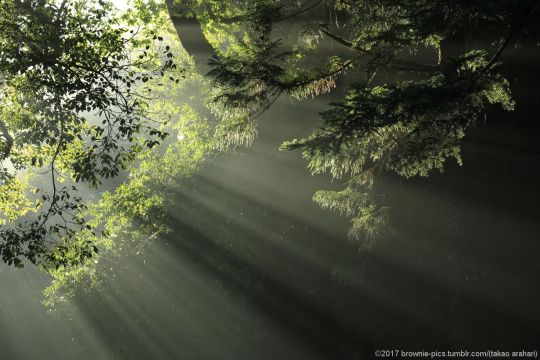
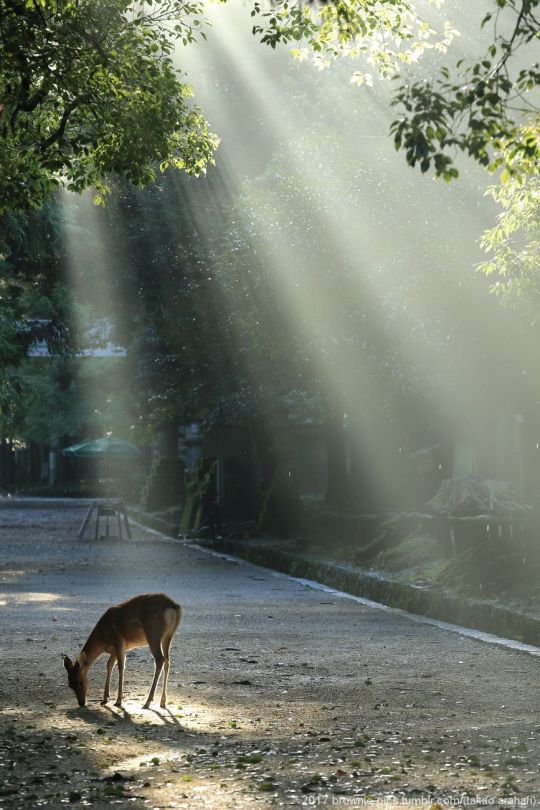
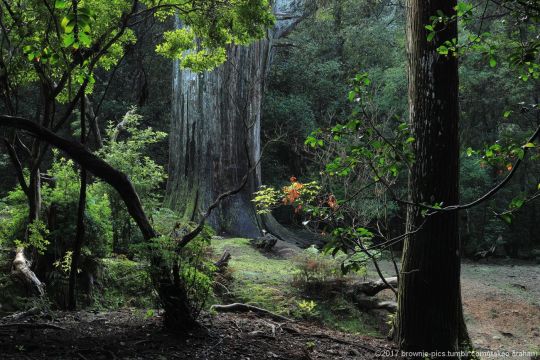
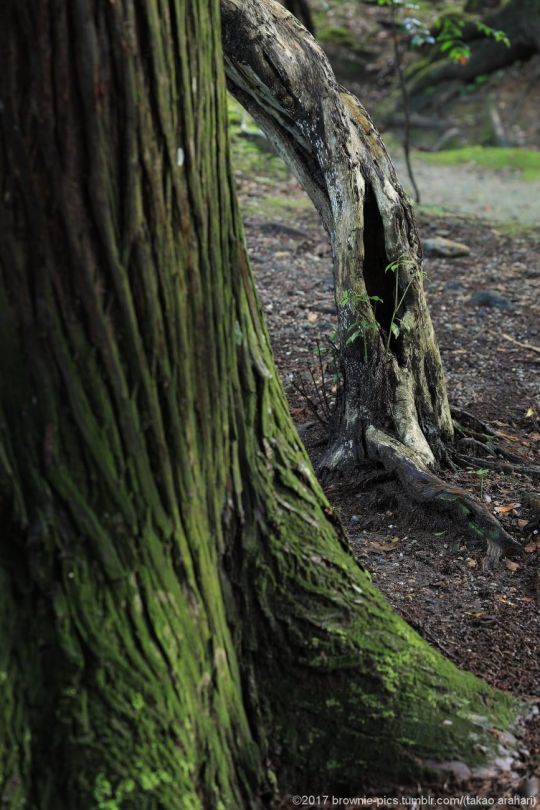
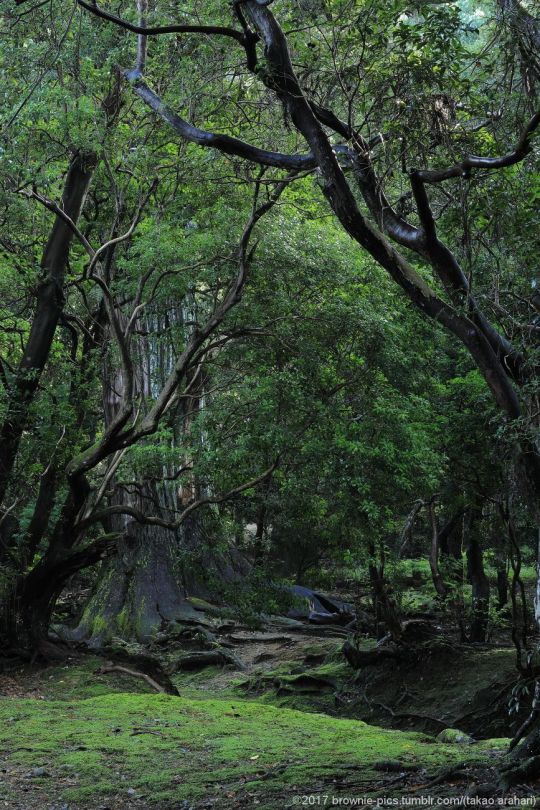

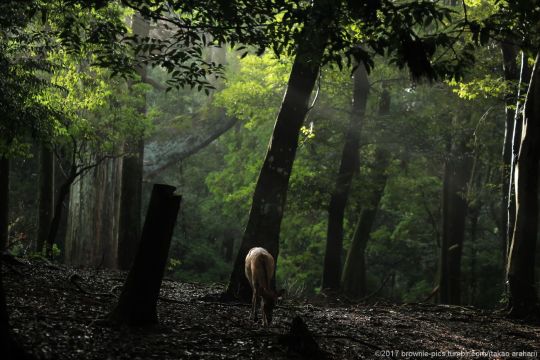
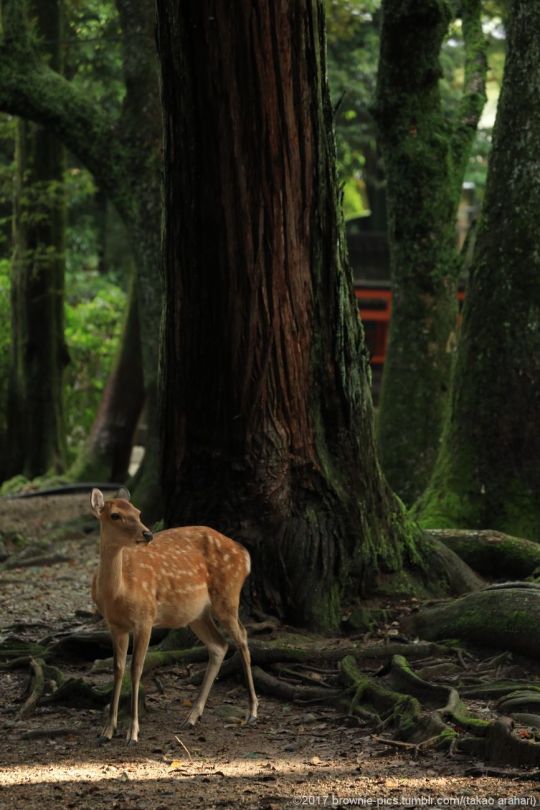

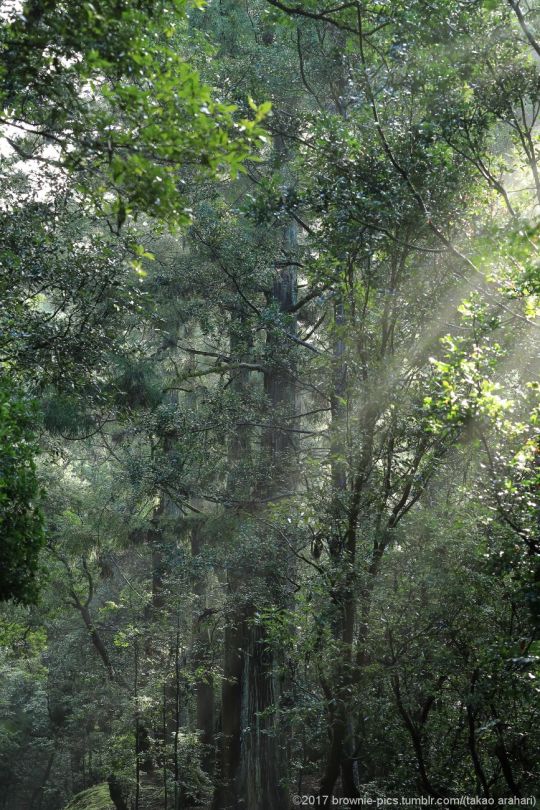
‘22.9.4 春日大社参道、二之鳥居付近にて
光芒降る中、参道を歩きます。二之鳥居近くの杜へ入ると木々の滴に森の養分が溶け込んで蒸散され、濃いフィトンチッドが充満しているようでした。
#奈良#nara#日本#japan#奈良公園#nara park#春日大社#kasuga taisha shrine#森#forest of kasuga taisha shrine#鹿#deer#光芒#the glow of trees#晩夏#late summer#photographers on tumblr
442 notes
·
View notes
Text
Nara city

You might have heard about Nara since it’s famous for the deer wandering through the city. It’s a small enough place that I personally suggest people to make it a day trip from Osaka or Kyoto by train rather than bringing along your luggage to stay the night. I recommend at least going to Todaiji to see the Great Buddha statue (admission is a couple hundred yen) and visiting the deer in and around Nara park, although no matter where you go in the area you’ll come across them anyway. There’s a pretty good route that takes you through most of the main famous spots in Nara that I usually take with visiting family and friends, starting at Nara station and going along the Sanjo Dori shopping street, through Kofukuji temple, Yoshikien or Isuien Japanese gardens (they’re right next to each other—if I recall, admission is free for foreigners in both gardens), Nara Park, Todaiji, and Kasuga Taisha shrine. Depending on your interests you can add a few museums in and around Nara park, some other smaller temples and shrines, or visit the primeval forest behind Kasuga Taisha. Be aware that it is a long day of walking, but there are lots of small restaurants and cafes to take a rest and get something to eat. You can buy some senbei crackers for the deer, but they will bite at your pockets and bags if they think you have some stored away.
14 notes
·
View notes
Text
Visitors from the West pt 3
October 20th 2018
Stuart arrived early on a Saturday morning. To get over the jetlag we dragged him to a local rugby game.
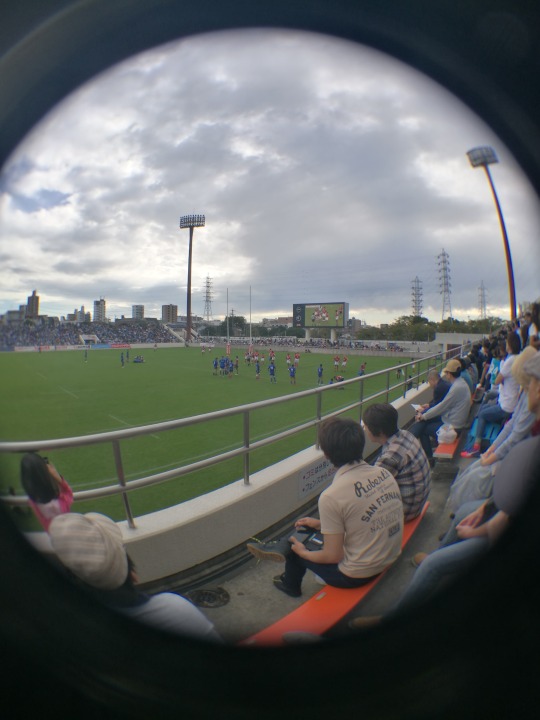
We checked out some of the quality views from above in Nagoya; from Oasis 21 and Midland Square.

A bike tour of Nagoya took in Nagoya Castle and Osu Kannon. It was the Nagoya Festival which meant there were parades celebrating the three heroes of Nagoya;- Oda Nobunaga, Toyotomi Hideyoshi and Tokagawa Ieyasu.

Nara is the home to bowing deer, Todai-ji- the biggest Wooden structure in the world and Kasuga Taisha a shrine of 3000 lanterns.


Todai-ji is always thronged with tourists so it was lovely to find the comparatively quiet Kasuga Taisha shrine. The stone lanterns guard the paths leading to the shrine. Deer nestle between these and bow to the tourists. The moss covered stone and the interlacing tree canopy make for a contemplative space away from the biggest crowds.
Kyoto is another must see place close to Nagoya. To make the best of it an early start is vital. The first location was Arashiyama Bamboo Forest.

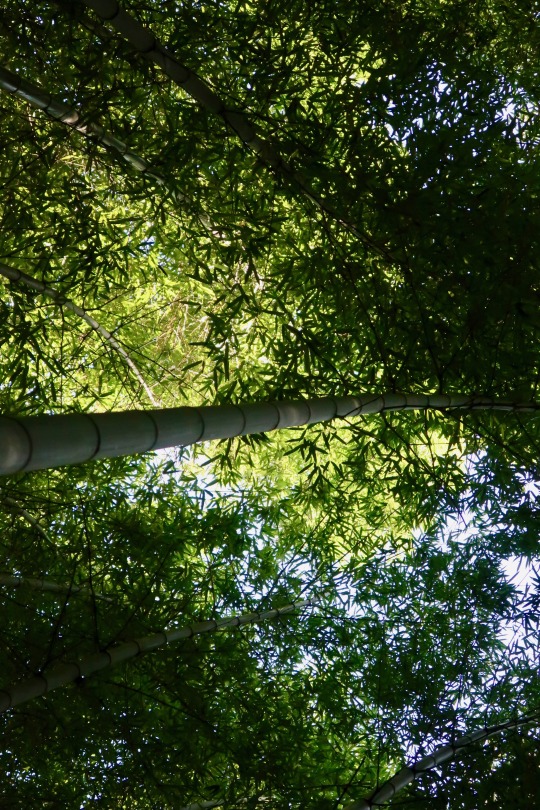
After the bamboo forest it was straight to Kiyomizu-dera for a walk through a pitch black tunnel that leads below the buddha. In the spot directly below the buddha light pools on a stone carving. You are supposed to touch the stone and make a wish. Kioyomizu-dera overlooks Kyoto with its orange pagoda. The next stop was Yasaka shrine. We then found our way to the Samurai and Ninja Museum. This museum is aimed at foreigners. The tour guide speaks excellent English and explains the history of the Samurai and Ninja clearly to give a good overview. There is a ninja training activity with throwing stars and blow darts. There is also the opportunity to try on Samurai armour and you are taught how to hold a sword. Got to love a big shiny helmet!



After the museum we visited Sanjusangendo the temple of a thousand golden buddhas and Fushimi Inari a shrine famous for its many red torii gates.
For Stu’s birthday we took him cosplay bowling. If you won a game you had to dress up - Stu is pretty good at bowling.


A successful evening bowling needed to be followed by a chilled day. We headed to the Tokagawen for some tranquil gardens and massive Koi Carpe.
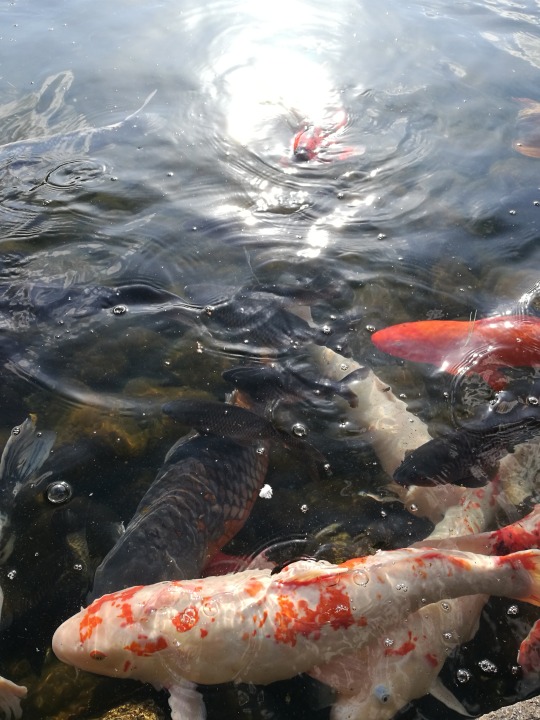
To finish we visited the awesome il cugino cafe where they produce the cutest coffee art and cake.
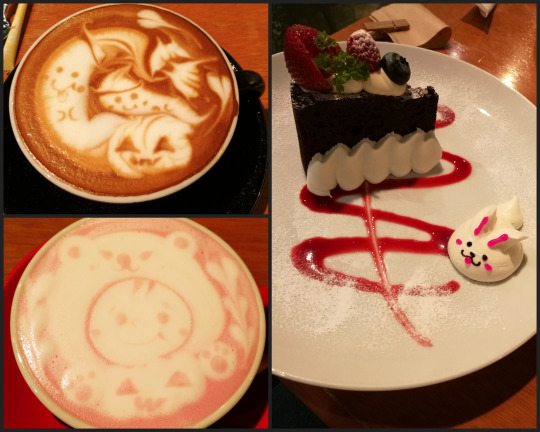
1 note
·
View note
Text
Fast trains and paper cranes: a Japanese adventure
A ‘hop on, hop off’ westbound itinerary from Tokyo to Kobe by Shinkansen
With its futuristic cityscapes and tranquil temples, ancient traditions and cutting-edge luxury hotels, Japan is a country that must be seen to be believed. And, thanks to its legendary Shinkansen (also known as the Bullet Train), travel is all part of the experience. In this itinerary, we whisk you from Tokyo to the country’s waterfront cosmopolitan city, Kobe, taking in some of the country’s must-see sights en route. Prepare to be swept off your feet.
AT A GLANCE
An open-ended independent itinerary for Japan, based on flying into Tokyo to travel westbound by the world-famous Shinkansen.
Recommended scenic stop-off points include Izu, Nagoya, Ise-Shima, Nara, and Kyoto.
Highlights include luxury hotels, tranquil temples and shrines, cherry blossom tunnels, and views of Mount Fuji.
START IN STYLE: TOKYO
Tokyo is a city that never stands still; a sprawling mishmash of neighbourhoods each with their own distinct identity. Before embarking on your Shinkansen adventure, pause at the Toyko Station Hotel, a gorgeous red-hued building that dates back to 1915. Start your stay as the locals do, with a jog to the Imperial Palace. Then spend a day or two exploring the city: the shopping district of Ginza, the grand Gyoko-dori street, the Godzilla statue in Tokyo’s Hibiya, and the many restaurants of Tokyo Station are all on your doorstep.
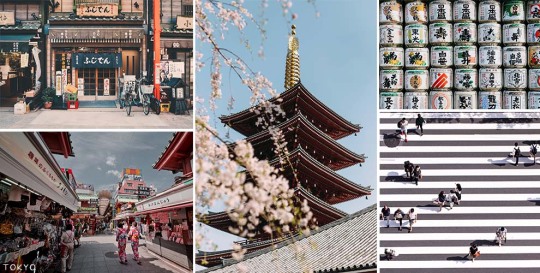
To get a feel for Tokyo’s many sides, go twin-centre and book a night or two at Hotel Gajoen Tokyo. Located in the hip Meguro district, from here you can seek out trendy shops and craft cafes. And, if you’re visiting in the spring, don’t miss the annual cherry-blossom festival as these iconic trees drop their confetti-like petals.
WHERE TO STAY
At times, Tokyo can feel a little overwhelming, so we highly recommend choosing hotels in a great location, but with a sense of space and calm. Tokyo Station Hotel puts the capital’s highlights at your feet, while Hotel Gajoen Tokyo feels like a city-centre retreat: tranquil, elegant, yet moments from the trend-setting Meguro district. Suggested stay 3-5 days.
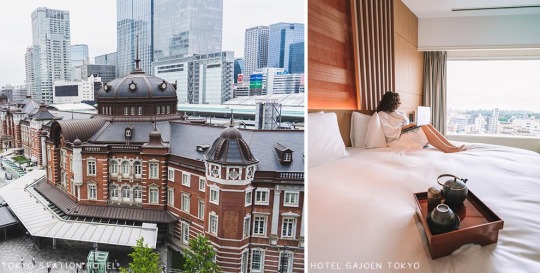
ALL ABOARD THE SHINKANSEN
Catching the Shinkansen is an effortless experience. Trains leave from both Tokyo station and Shinagawa station with surprising regularity – and typical Japanese efficiency. The average delay is just 36 seconds. And shortly after boarding you’re off: rocketing along at up to 320 kilometres per hour. Order some refreshments and take in the views as you whiz past Mount Fuji.
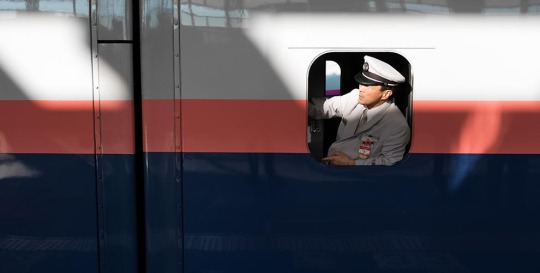
If time is tight, you could make the full journey to Kobe in two hours, 40 minutes. But we’d highly recommend making some detours along the way, starting with the spellbinding Izu.
THE NATURAL WONDERS OF IZU
Rugged coastline, mellow surfer beaches, dense forests dotted with traditional ryokan dwellings and onsen with their therapeutic hot waters. It’s hard to believe that the cool, green calm of Izu is under an hour away on the bullet train from the non-stop bustle of Tokyo. Known as the ‘province where the hot water gushes’, Izu is overflowing with natural wonders – take in views of Mount Fuji from the top of a volcanic crater, or wander through pink tunnels of Kawazu cherry blossom.
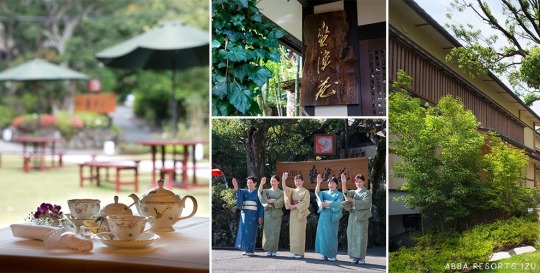
In perfect harmony with its unspoilt natural surroundings, ABBA Resorts Izu is a serene Japanese-inn style forest dwelling, where you’ll soon drift away into a state of Zen-like bliss in the mineral water bubbling up from the Ukiyama Hot Springs. Suggested stay 1-2 nights.
Take the Izuhakone Railway Sunzu line from Shuzenji Station to Mishima, then take the bullet train to Nagoya.
NAGOYA: THE BEST OF BOTH WORLDS
Nagoya’s location means you don’t have to travel far to experience awe-inspiring natural beauty. Head to the picturesque Japanese Alps for hiking and panoramic mountain views. Or stay in the city and visit the Shirotori Garden, full of flora and fauna all year round. Known for its special Hatcho miso, Nagoya is the perfect place to sample some of Japan’s most authentic flavours, from a hearty bowl of misonikomi to the tender meat of doteni.
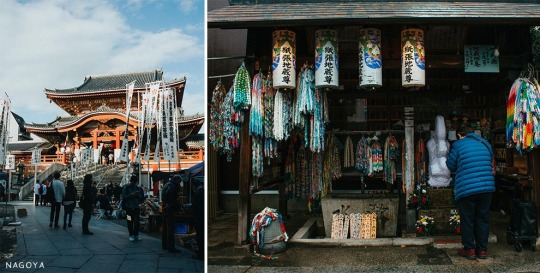
Take the Kintetsu Express train from Kintetsu Nagoya to Kashikojima – a complimentary shuttle bus is available from Kashikohima to Shima Kanko Hotel: the Bay Suites in Ise-Shima.
A PLACE OF PILGRIMAGE: ISE-SHIMA
Princes, poets and pilgrims have long turned to Ise-Shima for spiritual, cultural (and culinary) inspiration. This ocean peninsula is where haiku-pioneer Matsuo Bashõ was born and where the Imperial Family is said to source their seafood. A stay in Ise-Shima demands a pilgrimage to Ise-jingū. This sacred Shintō shrine complex is the size of a small city – a labyrinth of inner sanctums, outer temples and moss-carpeted courtyards in a serene forest setting. The original shrines date from the 3rd century, but the ones you’ll see are newer – tradition dictates the shrines are recreated every 20 years to specific plans and ancient practices.
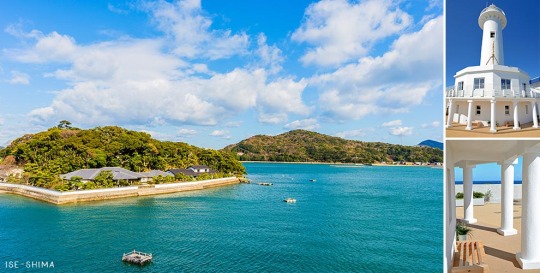
Breathe in the postcard-worthy peacefulness of Ise-Shima National Park from the comfort of Shima Kanko Hotel: the Bay Suites, an all-suite Japanese retreat on the shores of Ago-Wan Bay. Enjoy the perfect pairing of sunsets with your seafood at Michelin-starred La Mer, or get a taste of everything on the intricately prepared tasting menu at Hamayu, the hotel’s second restaurant. Immerse yourself in the local culture with Shima Kanko’s impressive array of activities, from making your own oceanic accessories at Pearl Miki, to taking part in a traditional Tea Ceremony in the beautiful Tatami Room, ‘Guan’. Suggested stay 2-3 nights.
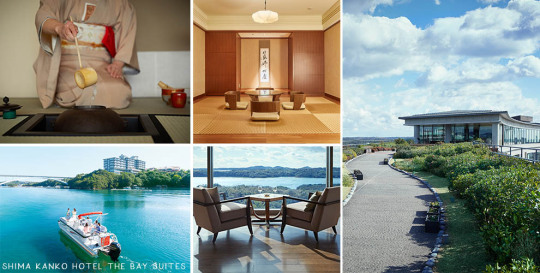
Take the Kintetsu Express train from Kashikojima to Yamatosaidaiji, transfer to the Kintetsu Nara Line to Kintetsunara (2h30m journey) – note that the Japanese Rail Pass is not valid on Kintetsu trains.
HISTORIC NARA
Next up is the first capital city of Japan, home to eight UNESCO World Heritage Sites. Wander through the serene Isui-en Garden, be inspired by the world-famous Todai-ji Temple, lose yourself in the pathways that surround the Kasuga-Taisha Shrine. Along the way, you’ll encounter the sacred deer that roam free across the city. To really soak up the atmosphere of Nara, we recommend staying overnight at Noboriojo Hotel Nara. This boutique hotel is right at the foot of the Kofuku-Ji temple and renowned for its exceptional service and French-influenced fine dining. Suggested stay 1-2 nights.

Miyakoji rapid trains operate every 30 minutes between JR Nara Station and Kyoto Station – the journey takes around 45 minutes. Kintetsu Nara and JR Nara Line also connect to Kyoto.
KYOTO: TEMPLES, TEA, AND PLUM TREES
With more than 1,000 temples and countless tea houses, Kyoto is the heart and soul of ancient Japan. And, while the best way to experience the city is to step out and lose yourself in it, there are some sights every traveller should see. Fushimi-Inari Taisha is an awe-inspiring shrine made up of hundreds of vermillion gates that form a tunnel up the mountainside. And, in the evening, the softly-lit Geisha district of Gion has an enchanting, secretive atmosphere. Make time for hanami, the ancient practice of flower-viewing, before sipping on sweet umami-plum tea fresh from the city’s groves, which come into full bloom every spring for the annual plum and cherry blossom festivals.

A restored ryokan with suites discreetly arranged among green courtyards, Sowaka perfectly complements this historic city. Harmoniously designed, traditional ryokan elements such as paper sliding doors are interwoven with modern comforts. Bath amenities are made with Japanese camelia oil, and the hotel’s water is drawn from its own underground spring. It’s all designed to create that Kyoto-state-of-mind. With the ancient capital on your doorstep, private tours are available to the nearby Kiyomizu-dera Temple – guided by one of the priests, you will have exclusive access to areas that are normally off-limits to the public. Suggested stay 2-3 nights.

Either take the Special Rapid train on the JR Kyoto Line which will get you to Sannomiya Station in Kobe in 50 minutes, or the high speed shinkansen to Shin-Kobe Station which only takes half an hour.
LAST BUT NOT LEAST: KOBE
Home to the highly prized Kobe beef, your final destination is an ancient maritime gateway with the verdant Rokko mountains as a backdrop and the sea stretching beyond the bustling port. Climb the Port Tower for great views of the city and then visit the numerous shops and restaurants along the waterfront, or Take a stroll along Harborland and Meriken Park. Compact and picturesque, most things can be reached on foot from your luxury hotel, Hotel La Suite Kobe Harborland. Overlooking the harbour with stunning sea views, every bedroom has a large Jacuzzi bath with a television for the ultimate relaxation time. Suggested stay 1-2 nights.
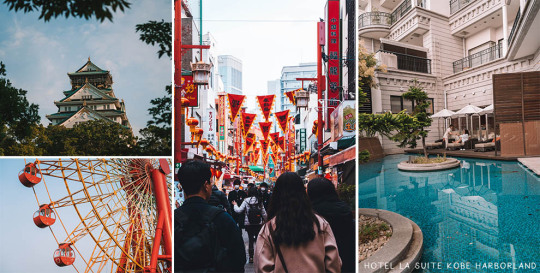
TRAVEL TIPS
Make sure you choose the correct category of Shinkansen for your journey. On the Tokaido Shinkansen, from Tokyo to Kobe, the most frequent and fastest option is the Nozomi. If you’d like to use the Japan Rail Pass, your best choice is the Hikari which takes just over three hours.
BOOK YOUR BOUTIQUE HOTELS
To book the hotels on this independent itinerary, get in touch with our Voice Reservation Team on 0800 0482 314 (UK) & 1-877-234-7033 (US). You can find a full list of our dedicated toll-free numbers here. We’re ready and waiting to plan luxury adventures 24 hours a day, seven days a week. So whenever inspiration strikes, just get in touch.
The post Fast trains and paper cranes: a Japanese adventure appeared first on Small Luxury Hotels.
from Small Luxury Hotels https://ift.tt/3c0PVxx
Publish First on
0 notes
Photo

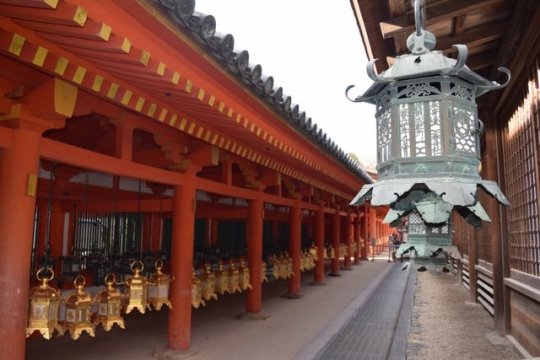
KASUGA TAISHA:
KASUGA Taisha is an ancient Shinto shrine located in a forest east of Nara, capital of Japan between 710 and 784 CE. Founded in 768 CE, the site has four main shrines in honour of four Shinto-Buddhist deities, one of which is the ancestor god of the important Fujiwara clan. The complex, including its surrounding forest with wild deer, is listed as a UNESCO World Heritage Site.
Read More
#Japan#Shinto#Architecture#Religion#Japanese#History#Ancient History#UNESCO#Ancient History Encyclopedia
139 notes
·
View notes
Photo

Wandering through Kasuga forest. I think I see a black metal band logo in there somewhere. • • • #KasugaTaisha #春日大社 #kasugaShrine #kasuga #shrine #shinto #shintoShrine #奈良 #奈良市 #奈良県 #日本 #関西 #nara #Japan #kansai #kansailife #naralife #discoverkansai (at Kasuga-taisha)
#nara#kansai#shintoshrine#奈良市#kasugashrine#春日大社#naralife#shinto#japan#関西#奈良#kasuga#日本#kansailife#奈良県#discoverkansai#kasugataisha#shrine
3 notes
·
View notes
Photo

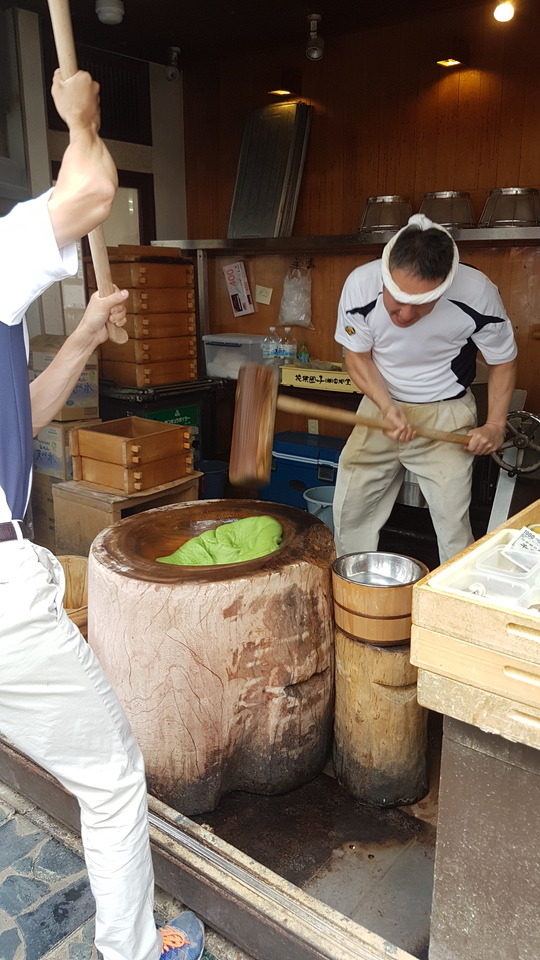


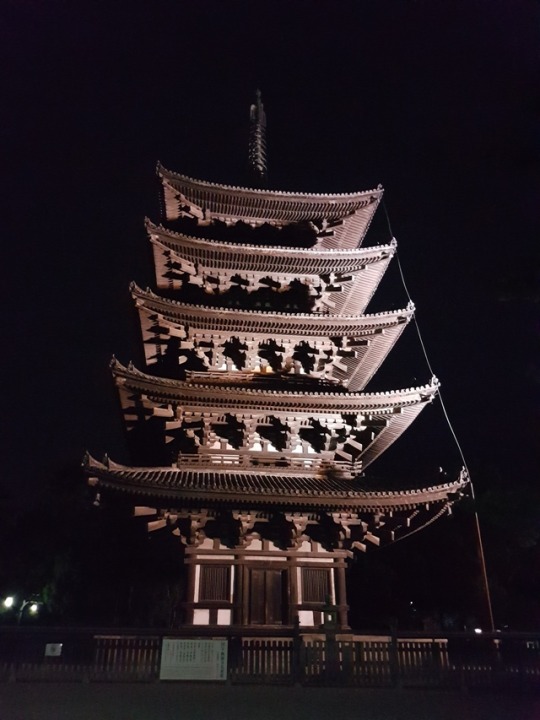

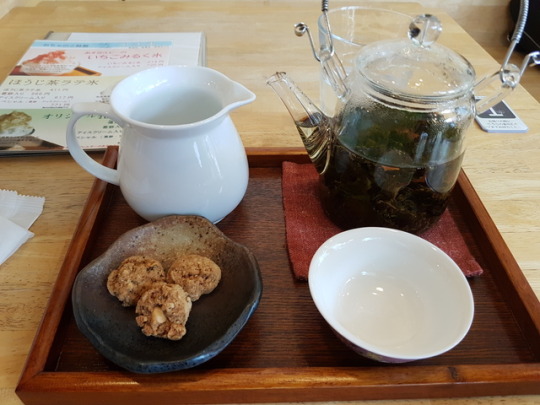

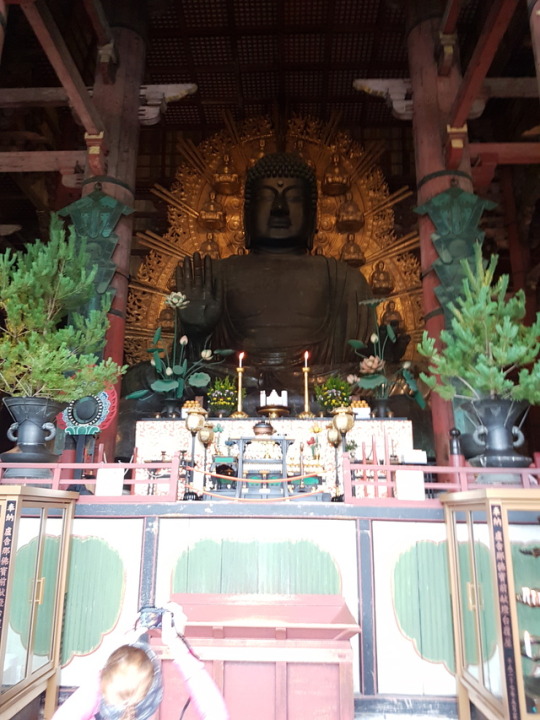
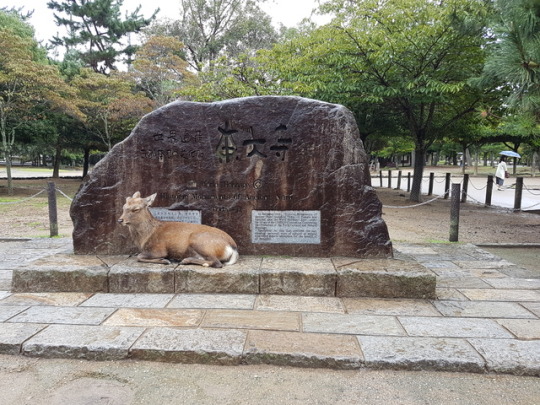
Yesterday and today I explored Nara, Japans first capital, which is home of the famous japanese deer! I visited almost every temple and shrine in the area and they were everywhere!
After I stored my suitcase at my Hostel, I went to Kofukuji, one of the first buddhist temples in Japan. It had different halls and a big five-story pagoda which looked especially great at night! Unfortunately the main Hall is being reconstructed at the moment and I couldn’t see it, but from the scale of the site it has to be huge once it has been rebuilt ^^
But the real collossus of a temple was waiting for me today...
Even though it was raining all day I had a lot of fun walking to and through Todaiji, the worlds tallest wooden building with the Daibutsu, the worlds biggest bronze statue. It really startled me how big they really were :O
Afterwards I visited Kasuga Taisha, a Shinto shrine from the 8th century. The rain really fit the mood and strolling through thick forest. Discovering one tiny shrine after another was really exciting and calming at the same time ^^
Actually, before that I started my Goshuincho, a book to collect stamps and calligraphy from temples and shrines all around Japan. Now I already have 3, from Kofukuji, Todaiji and Kasuga Taisha :)
I returened relatively early to the hostel today to write this and have some Nara-style Sushi I bought beforehand. It had an interesting, yet delicous flavour from the Kaki leaves it was wrapped in :)
1 note
·
View note
